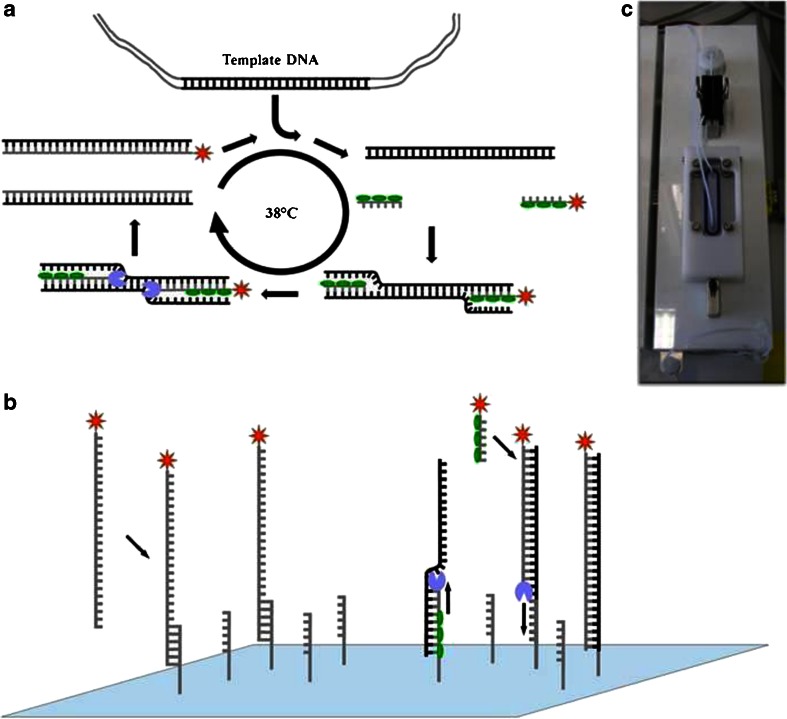Fig. 2.
Principle of labeling RPA, on-chip RPA and photograph of one programmable hybridization chamber. a Schematic reaction mechanism of the labeling RPA in solution: two oligonucleotide primers form a complex with a recombinase (green ovals) and are directed to homologous sequences on the target sequence were they are able to invade the DNA double strand. The polymerase (blue) elongates the strand leading to duplication. RPA runs continuously at 38 °C. A labeling of the amplification product is achieved by using a reverse primer coupled with a Cy5 reporter dye (red). b Two mechanisms for signal generation during the on-chip RPA. (i) Single-stranded and labeled amplicons from asymmetric RPA in solution above the biochip can hybridize specifically to immobilized forward primers. (ii) The forward primer attached to the surface serves as starting point for solid-phase RPA c Photograph of one chamber in the programmable hybridization station used for on-chip RPA experiments. The chamber is temperature adjustable and features an individually programmable pump-driven mixing system (not in the picture) with a reaction volume of 45 μL. Slides placed in the chamber are sealed with a silicone o-ring

